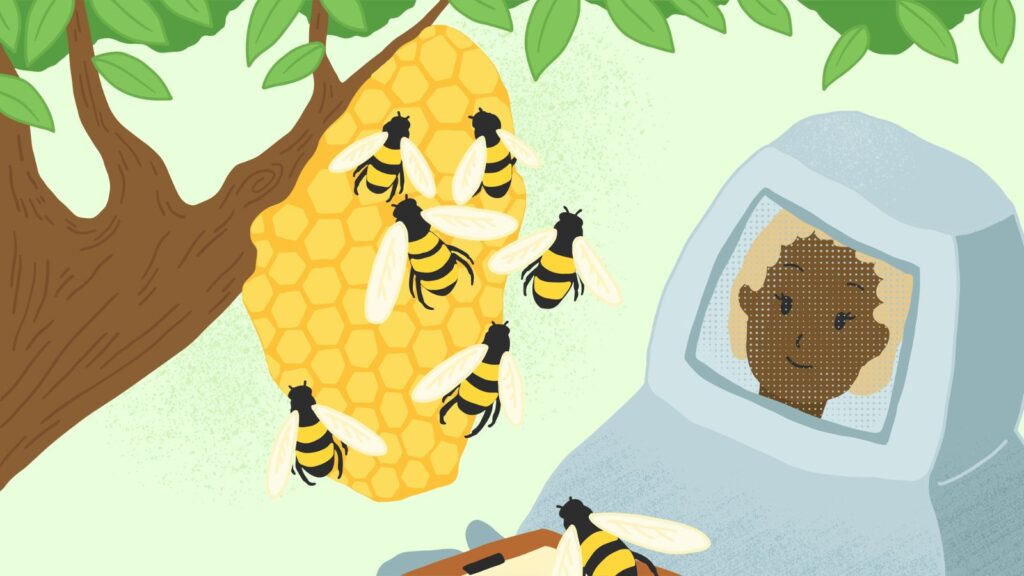Welcome to the fifth installment of the Reality Sandwich series, Kindling Spirit: Healing from Within, the remarkable memoir by Dr. Carl Hammerschlag. Once each month, we will present a new chapter on RS. Please visit the Kindling Spirit homepage tolearn more about the book, and about the accompanying teleseminars ledby Carl and his longtime colleague John Koriath. These Kindling SpiritTelecircles will extend the dialog raised by Carl's experiences,related on these pages, and involve your stories as well. To sign upfor the teleseminars, click here. Read Chapter One of Kindling Spirit here. Read Chapter Two here. Read Chapter Three here. Read Chapter Four here.
Living the goodlife has nothing to do with whether you are born with a silver spoon, or ifyou've had to survive enormous hardship. Whatever hand life deals you turns outto be less important than the choices you make about playing the hand you'vebeen dealt. A quality life has nothing to do with being dealt perfect cards,it has to do with learning how to play an imperfect hand well. Destiny is thehand that you're dealt; free will is how you choose to play it. Choice is thegreatest power because it gives you an opportunity to move beyond thepowerlessness of your predicament. If you believe you have no choice, that youare so gripped by fear that it immobilizes you, then your only hope is to waitfor something/someone other than yourself to bail you out. St. George maymiraculously appear and slay your dragon (and miracles do happen), but you'vesurrendered your destiny to someone else's control.
Find a way to befully present with who are and where you find yourself, then you can choose totake one step to live a quality life; that is playing the hand well andpracticing radical self-acceptance.
I remember Roger Ebert as theshort, chubby partner of that great film critic duo, Siskel and Ebert. RogerEbert was sharp, witty, and literate, with big-rimmed eyeglasses that made himlook owlishly professorial. I hadn't seen him in years and in March 2010, I sawhim on the Oprah Winfrey Show. It wasn't the Roger from my memory; his face wasthinner, scarred, and he spoke with a synthesized voice.
In 2002,Roger had surgery for thyroid cancer and thought they had gotten it all. Thefollowing year they found the cancer in his salivary gland which they took out,and then irradiated. All during this time Roger continued to work, writing hiscolumn in the Chicago Sun-Times and blogging.
In 2006, doctors removedhis right jaw, after which followed a series of reconstructive procedures andcomplications, Since 2006 Roger has not eaten or drunken anything by mouth. Heis fed through a gravity-drip bag through a permanent opening into his stomach.He says he does not miss the activity of eating or drinking so much as hemisses the camaraderie of dining with friends.
His doctors have askedhim to let them make another attempt at restoring his jaw and voice, but Rogerhas refused. He says, "I'm done with surgery, even if the cancer returns.This is who I am, this is how I look and I'm okay with dying. I was perfectlycontent before I was born, and I'm thinking of death as the same state. I hopeto be spared as much pain as possible on the approach path.
Rogerrevealed all this in an Esquire Magazine (February 2010) in-depth interview,incorporating a full-page portrait of his surgically-altered face. Roger saidit was time that people looked at his face. This is the way I look, I don'thave a perfect face, but my life is happy and productive. We have to find peacewith the way we look and get on with life.
Roger's appearance onOprah's show was the first time he had spoken publicly in four years. He spokein his synthesized voice that he calls Roger Junior. Computer programmerscompiled his DVD commentaries to capture the essence of his voice and recreatedit. Roger says, "it needs a little improvement, but it sounds like me, andtalking makes me happy."
I was introduced to MarthaMason's story through an obituary in the New York Times (New York Times,5/10/09). Martha died in her home in Lattimore, North Carolina at the age of71. This remarkable woman was struck by polio when she was 11. She went to bedone night feeling achy, but didn't tell her parents about it because they hadjust buried her 13-year-old brother who had died of polio only days before.Martha spent the next year in hospitals and returned home to Lattimore.
Lattimorehas been home to Martha her entire life, for 60 years of those years she livedin an iron lung (longer than anybody). Maybe this small town, where people haveknown you and your family for generations is the only place she could havethrived so well. Being encased in a 7- foot-long, 800-pound iron cylinder madeit hard to move around easily; so in a town of 400 people Martha didn't have togo to town, the town came to her. In Lattimore, everybody was a neighbor; herteachers came, the family doctor made housecalls, and members of the FireDepartment came by during terrible weather and power failures to make sureher backup generator was working.
Martha Mason came home to Lattimore,graduated number one in her high school and university class and then beganwriting for the local newspaper. High School graduates would stop by beforegraduation so Martha could admire them in their caps and gowns. Newly marriedcouples came by in their wedding finery, and town celebrations always includedher. She became an Associate Professor of Communications at Wake Forest, hadfriends all over the world, who sent her magnets to stick on her iron lung.Martha often gave dinner parties where she ate lying down with her guestsaround the dinner table. Pushed up beside the table, her iron lung looked ìlikea steamer trunk. Using a voice activated computer she wrote in a book abouther life fifty years later (Breath, Down-Home Press, 2003).
Marthasaid she survived because she was endlessly curious and there was so much tolearn. She chose to remain in an iron lung because of the freedom it gave her.Martha didn't want to try one of the newer, smaller ventilators because itmight require tubes in her throat. She could live at home in a community thathelped her be independent because the iron lung didn't require professionaltraining to operate,
Anticipating every new day rather than dreadingthe coming dawn is radical self-acceptance. Martha Mason said, "I'm happy withwho I am, and where I am. I wouldnít have chosen this life, certainly. Butgiven this life, I probably had the best situation anyone could ask for, a fineand full life."
Wilma Rudolph, the first American woman to win threeOlympic gold medals, was a great hero of mine. She was the 20th of 22 childrenraised in rural Tennessee by poor, hard-working people. At a young age, she contracted polio that left her left leg and foot weak and deformed. Discouraged bylocal doctors who told her Wilma would never walk again, her mother took hertwice a week by bus to Nashville 50 miles away. After several years of intensephysical therapy, massage, and the support of a metal leg brace, she got well.
Wilmastarted playing basketball in high school, she was so fast they called her "Skeeter" (short for mosquito). A Tennessee State University track coachwatched her play and encouraged her high school basketball coach to form agirl's track team. She was undefeated at her high school track events, andreceived a full scholarship to Tennessee State where she was a collegiate worldrecord holder, and then onto Olympic fame in Rome in 1960, and worldwidecelebrity.
After graduation Wilma became a schoolteacher, track coach,and civil rights activist, but she said her greatest accomplishment was theestablishment of the Wilma Rudolph Foundation, a community-based non-profitoutreach program to nurture young students and athletes.
When Wilma wasin her early 50s she was diagnosed with a malignant brain tumor and she diedwithin a year. During the last year of her life, exhausted by her treatment,she still managed to visit schools in rural Tennessee. Wilma spoke to poor,underachieving kids, and told them that the most important lesson she learnedin life, she learned in track. And that lesson was, "don't ever drop out of arace, because if you drop out once, it's easier to drop out twice." Wilmatold these children that they were in the race of their lives, and to stay inschool because then they would be prepared to be strong finishers inlife.
This is the difference between healing and curing. WilmaRudolph was not cured of her disease, but she was healed. Healing is aspiritual expedition not a physical one. It's about connecting personally withsomething other than yourself. Healing is getting hooked up to some energeticpower source that reminds you that whatever you're facing, you're notfacing it alone. Healing is having the courage to see yourself as you are, andstill love yourself.
The process of healing is not about gettingcured, it's about getting real, and getting real is radicalself-acceptance.
Even in dementia one can find acceptance. I readabout Doris and Ethel in my local paper. Both in their 80s, they shared a roomin an assisted living facility for people with moderate to severe dementia.Neither of them knew why they lived there or how they got there. They didn'tremember names or faces; reality was sometimes elusive, but they knew eachother.
Doris and Ethel were nurses; both lived through the GreatDepression, World War II, lost husbands, had children and grandchildren. Theywere best friends, and passed their days making hats, talking to each other.They never ran out of things to say, and they loved to knit. It took them acouple of days to finish knitting the colorful hats, which on completion weredonated to the Salvation Army who distributed them at a homeless shelter.
Thesehandmade hats were deeply appreciated, and sometimes Doris and Ethel got thankyou notes and photos from grateful recipients. Both of them said this was theirfamily. Looking at those cards and pictures make them cry: Two old ladiestaking care of each other, uncured but healed.
I met Mattie Stepanekthe year before he died of a rare form of muscular dystrophy, calledDysautonomic Mitochondrial Myopathy. He had a sister and two brothers who alsodied from the disease. To cope with the death of his older brother when he wasthree, Mattie started writing poetry. By the time he was 12 he had written fivebooks that made the New York Times Bestseller List. He appeared on the OprahWinfrey show, Larry King Live, Good Morning America, and became NationalGoodwill Ambassador the Muscular Dystrophy Association. His story waschronicled in newspapers and magazines all over the world.
Mattiewanted most to be remembered as an international peace advocate. I met him at aNational Caring Award ceremony at the Kennedy Center in 2003, where he wasintroducing his hero former President Jimmy Carter. Mattie rolled out on stagein a wheelchair accompanied by his service dog, Micah, breathing through atracheotomy tube attached to a ventilator. He was self-effacing, had a sense ofhumor, and seemed confident and happy. When Jimmy Carter took the stage, hethanked Mattie, and said he had traveled to 122 foreign countries, met kingsand queens, but that Mattie Stepanek was the most extraordinary person he hadever met.
I was introduced to Mattie afterwards and like everybodyelse was taken by his precociousness, an old soul quality. Later, I asked hismother what she thought it was about him that inspired such profoundconnections with people. She said, "Mattie just gives people something tobelieve in; I think that's why he's here."
Mattie died a couple ofweeks before his 14th birthday. Nearly 1,350 people, among them Oprah Winfreyand Jimmy Carter, who delivered the eulogy, attended his funeral. Firefighters(whom he loved) stood as an honor guard outside the church, his casket wascovered with Harley-Davidson and firefighter bumper stickers and draped in theflag of the United Nations. Mattie's mother wrote, "you are my bestfriend, and I always have been and always will be proud of you my son. Thankyou for the coffee, the foot massages, the snuggles, the conversations, theinspiration, the motivation, the laughter, the tears, the prayers, the dreamsyou shared, and for the gift of celebrating life."
Balance betweeninner vision and outer reality is how we live in peace with ourselves and howwe leave an imprint on others. Five years after his death people keep coming toMattie's website (Mattieonline.com); they keep his message of hope and peace inthe world alive for him. Visitors come to Mattie Stepanek Park in Rockville,MD, where a bronze statue of him with Micah at his side, sits in the middle ofa Peace Garden. On 26 acres, the park has ball fields, picnic areas, andjogging trails. Sprinkled around the spacious green space are benches andplaques with quotes from Mattieís books and speeches, and paved paths of bricksinscribed with messages from supporters.
You don't have to beconfronting imminent mortality before you can identify your strengths and cometo peace with your frailties. The only requirements for this kind ofself-awareness is a willingness to look directly at who you are, then lettinggo of what else you thought you needed to be so that you can get on with therest of your life.
Getting old is the mechanism by which we areforced to tame our egos. If we cannot let go of the image we once had ofourselves, and own the truth of who we are now, then it reduces the length, andthe quality of our lives.
I'm old and getting older (my grandkids tell me I was born "B.D." (before dinosaurs), but I'm still active and my spirit is strong. Theprocess of aging has been a struggle though; I still have trouble letting go ofthe internalized image I have of what it means to be a strong/competent man. Mybody is slowing down, I stay sore longer, I can't pee my name in the snow (I'mhappy if I can clear my toes). I focus on my losses because they raise the uglyhead of my worst fears — losing my mind, becoming immobilized, or burdensome.
To be in a place of radical self-acceptance is to let go of any oldimages that no longer serve one. This is an ongoing struggle for me becauseevery time I get to a place where I can love the one I'm with, somethinghappens to remind me I still have a long way to go.
A couple of yearsago, my wife and I decided to downsize which would allow us to support ourlifestyle, but I was unprepared for the consequences of that decision. I havealways been able to deal with losses, loved ones, body functions, but I lost myequilibrium as I prepared to my leave my home of 40 years. This was not just ahouse, this was the ceremonial center of a multi-generational family, anextension of my body and soul. Four generations have slept within its walls,lived our life history inside and on the surrounding grounds. Mygrandchildren's placentas are buried outside; each has its own bush or tree ontop of it. I am the keeper of a sweat lodge at my home.
I knew in mymind that the house did not hold the essence of me, or what we experienced hereas family, but as I went through my library and had to decide which books tokeep or give away, I wept. When they put the for sale sign out in front whichsummarized this part of my life history as "4BR, 3B, 5 fireplaces, separateguest house," I got depressed.
My friend and holy brother Patch Adamscame to visit me and we talked long into the night surrounded by my treasuresand Patch looked at me in my misery and said that whatever else moving fromthis house meant for me, moving also released me from the inertia of itscomforts which may have kept me from exploring some new territory. And then herecited a poem (one of his favorite pastimes) by Mary Oliver.
To livein this world
you must be able
to do three things:
to love what ismortal;
to hold it
against your bones knowing
your own life dependson it;
and, when the time comes to let it go,
to let it go.
(Quotedin part from "In Blackwater Woods" from the book American Primitive by MaryOliver, Backbay Books, 1983)
And slowly I came back among theliving. We don't take anything with us, everything that's really important weleave behind. The most important question in life is how well did youlove.
Image by aussiegall, courtesy of Creative Commons license.















